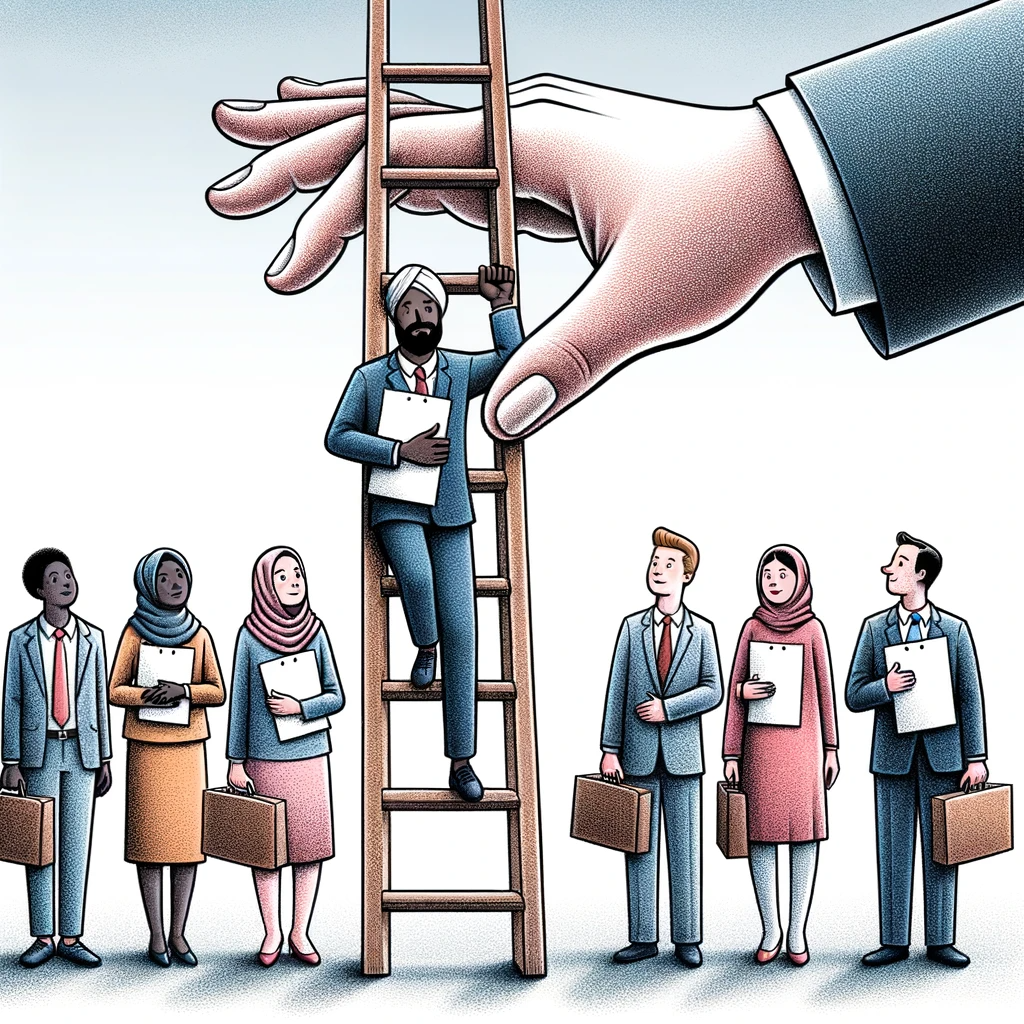Affirmative Action is a term widely used in the realm of human resources, representing a set of policies and practices aimed at promoting equal employment opportunities for all, irrespective of their race, color, religion, sex, or national origin. Originating in the United States, the concept has been adopted and adapted by various countries to address historical and systemic inequalities in the workforce.
Definition and Objectives
Affirmative Action refers to proactive measures by employers to enhance job opportunities for historically marginalized and underrepresented groups. The primary aim is to counteract past discrimination, level the employment field, and cultivate a diverse and inclusive work environment.
Historical Context
Affirmative Action arose in the U.S. during the 1960s Civil Rights Movement. Executive Order 11246, signed by President Lyndon B. Johnson in 1965, mandated government contractors to “take affirmative action” for unbiased hiring and employment. The scope later expanded to include women and other minority groups.
Implementation in Human Resources
- Analyzing the workforce to pinpoint underrepresentation.
- Setting clear goals for diversity and inclusion.
- Using targeted recruitment for diverse candidates.
- Offering training to underrepresented employees for career advancement.
- Regularly evaluating the efficacy of the policies and adjusting as needed.
Benefits and Challenges
While Affirmative Action promotes diversity, innovation, and broadens the talent pool, critics argue it might lead to reverse discrimination and tokenism, potentially stigmatizing beneficiaries.
Q&A Section:
- What prompted the initiation of Affirmative Action?
- It originated during the U.S. Civil Rights Movement to counteract historical discrimination and ensure equal employment opportunities.
- How does Affirmative Action benefit employers?
- It fosters diversity, boosts innovation, enhances morale, and widens the talent pool.
- What are common criticisms of Affirmative Action?
- Critics suggest it might cause reverse discrimination, tokenism, and may stigmatize its beneficiaries.
- How is workforce analysis used in this context?
- It helps identify areas of underrepresentation, aiding in setting clear diversity and inclusion goals.
- Do all countries implement Affirmative Action in the same manner?
- No, the concept is adapted based on each country’s unique history and needs related to employment inequalities.
Examples of Affirmative Action in Practice:
- Targeted University Partnerships: Some companies partner with historically black colleges and universities (HBCUs) to ensure a pipeline of diverse candidates.
- Diversity Internship Programs: Internship opportunities exclusively for underrepresented groups can provide a pathway to full-time positions.
- Mentorship Initiatives: Establishing mentorship programs can assist underrepresented employees in navigating their careers and networking.
- Supplier Diversity: Beyond hiring, companies might prioritize doing business with suppliers owned by minorities, women, or other marginalized groups.
- Inclusive Job Advertisements: Crafting job ads to appeal to a diverse applicant pool, ensuring they’re free of bias and inclusive language.
Conclusion
Affirmative Action plays an essential role in fostering equal employment opportunities. Its effective implementation can rectify longstanding inequalities and contribute to organizational success. The onus is on HR departments to align these policies with legal mandates and organizational values, ensuring a fair workplace for all.
Find this article useful? Fine more like it in our Top 50 HR Terms Every HR Professional Needs to Know series.
Article Written by Jacob Peebles, with research and assistance from chatgpt

